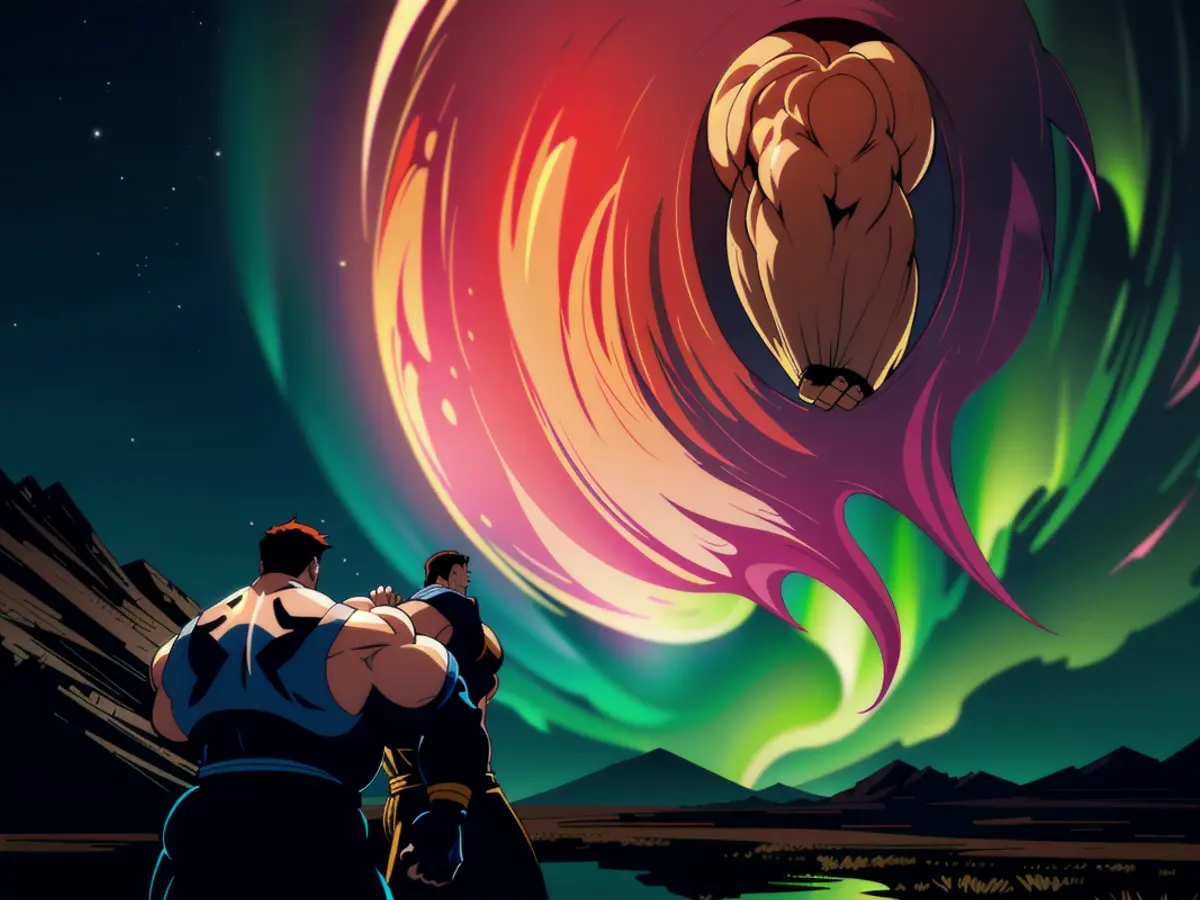Aurora Borealis Preview: Potential Display Over 10 States Tonight
Sharing the Spectacle
🔗 Post on Facebook
🔗 Tweet about it
🔗 LinkedIn Update
The Aurora Borealis Show is Coming Soon!
Get ready for an extraordinary celestial event! The National Oceanic and Atmospheric Administration (NOAA) predicts that the upcoming Sunday night will see the aurora borealis, or northern lights, in all its radiant glory, potentially gracing ten U.S. states with its dance.
A Glowing Forecast
NOAA has projected a Kp index of four for Sunday, a scale of nine, indicating that the northern lights could be quite striking, venturing further from the polar regions and brightening with increased activity.
Interestingly, the forecast predicts slightly lower stateside viewability than usual, with the view line extending beyond the typical boundaries.
For those fascinated by the night sky on Monday, take heart! NOAA forecasts a Kp index of three, with the view line reaching select northern states.
Where to Witness the Magic?
While Alaska is expected to be the star of the show, areas of Minnesota, Montana, and North Dakota are also prime viewing spots (refer to the map below). Moreover, northern parts of Idaho, Maine, Michigan, South Dakota, Washington, and Wisconsin lie above the view line for the northern lights, suggesting a possible sight under optimal conditions.
Tips for Stargazing
NOAA advises viewing the northern lights between 10 p.m. and 2 a.m., ideally in a place free from city light pollution and facing north. For an even better experience, try visiting a higher altitude spot, such as a hilltop.
Snap the Moment
Capturing the splendor of the northern lights requires a wide-angle lens and a tripod for camera stability. Cameras should also be set for lower light settings, with an aperture or F-stop of four or less. Smartphone photography enthusiasts can also grab stunning shots, just remember to keep your device steady using a tripod, and turn off flash with night mode enabled if available.
Background
Aurora borealis activity has been peaking for over half a millennium due to solar activity in the Sun's 11-year cycle. This surge in activity has made the northern lights more visible across the U.S. over the past few months, even becoming visible throughout the nation at times[1]. According to NASA, increased activity is expected to continue, offering outstanding viewing opportunities until 2026[2].
Enrichment Insights:- Throughout 2025, heightened solar activity during the spring equinox and geomagnetic storms, particularly in March, could result in the northern lights being visible in a broader range of U.S. states[3].- In addition to northern U.S. states, there have been reports of aurora borealis sightings as far south as Central Illinois during early March 2025[3].- Under optimal conditions and specific geomagnetic storms, the Northern Lights can be visible from New York to Idaho[2][3].
- Tonight, the aurora or northern lights, also known as aurora borealis, could be visible in ten U.S. states, including Alaska, as predicted by the National Oceanic and Atmospheric Administration (NOAA).
- The NOAA forecast for tonight suggests slightly lower stateside viewability than usual, but the view line extends beyond the typical boundaries, offering a unique opportunity to see the aurora in places like Minnesota, Montana, and North Dakota.
- For an even better chance to see the northern lights tomorrow night, NOAA forecasts a Kp index of three, predicting potential visibility in select northern states.








